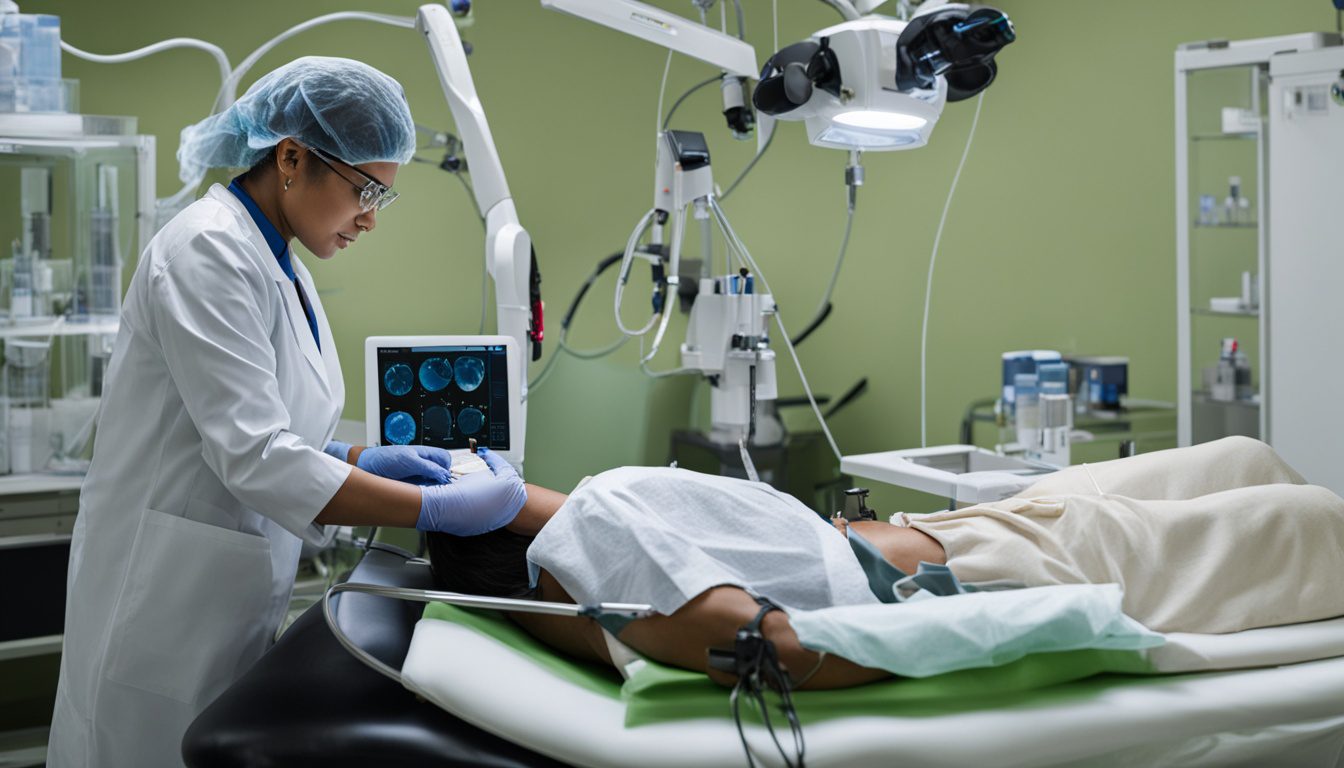Pilonidal cysts affect around 5% of the population. They appear in the sacrococcygeal area and may cause issues like cellulitis and abscesses. Though rare, about 0.1% of cases can lead to serious concerns.
The best way to treat pilonidal carcinoma is through surgery, making sure to remove it completely. Techniques exist to improve the tissue after surgery. Even so, the cyst can come back, and the chances of survival within 5 years after surgery are just 55%. Scientists are looking into using drugs and radiation to treat this kind of carcinoma more effectively.
Key Takeaways:
- Cyst pilonidal is a common disease affecting the sacrococcygeal area.
- Complications may include cellulitis, recurrent sinus tracts, and abscess formation.
- Malignant transformation of pilonidal cysts is rare, occurring in about 0.1% of cases.
- Surgical resection with free margins is the preferred treatment for pilonidal carcinoma.
- Tissue reconstruction methods can be used to repair defects caused by pilonidal cysts.
Symptoms and Diagnosis of Cyst Pilonidal
Recognizing cyst pilonidal disease’s symptoms is key for treatment. Health experts look for signs to choose what’s best. This part explains what symptoms may show and the tests used for diagnosis.
Symptoms of Cyst Pilonidal
Cyst pilonidal symptoms can change and can be different for everyone. Common signs include:
- A noticeable mass between the buttocks
- Pain around the lower spine area
- Fluid that is a mix of pus and blood
- Small channels from long-term inflammation
Remember, symptoms can vary. Some might have a simple bump, others a painful abscess or a draining channel.
Diagnosis of Cyst Pilonidal
Doctors often use a mix of exams and lab tests to diagnose cyst pilonidal. They start by checking for symptoms and asking about your health history.
Sometimes, they might suggest a CT scan to see more. This scan helps figure out the best treatments or if surgery is needed.
After the first checks, a closer tissue exam might be done. This test confirms if it’s cyst pilonidal by looking at the tissue under a microscope.
By diagnosing cyst pilonidal correctly, doctors can plan the best care for you.
| Pros | Cons |
|---|---|
| Accurate diagnosis enables targeted treatment | Can be misdiagnosed or overlooked |
| Gives healthcare professionals a clear understanding of the extent of the disease | Additional imaging tests may be required for accurate assessment |
| Allows for the identification of potential complications | Biopsy may be necessary for definitive diagnosis |
Causes and Risk Factors of Cyst Pilonidal
The cause of cyst pilonidal is not fully understood. But, it seems linked to chronic inflammation from loose hair in the lower back. If hair breaks the skin, it can cause a cyst to form. Cyst pilonidal doesn’t pick by age or gender. Yet, some factors can make it more likely to happen.
Obesity and Pilonidal Cyst
Being obese greatly increases the chance of getting a cyst pilonidal. Too much weight puts extra pressure on the lower back. This makes the area more open to cyst formation. Also, excess fat can keep the area warm and wet. This is perfect for bacteria to grow. So, being a healthy weight is key to avoid this problem.
Other Risk Factors for Pilonidal Disease
Besides obesity, being inactive or sitting a lot raises the risk of cyst pilonidal. A family history of the disease also makes it more possible. Having a lot of body hair can add to the risk too. It allows more hair to get into the lower back and cause trouble.
If the skin where your backside starts is hurt, that’s another way cysts might start. This can happen from clothes rubbing or sitting on hard surfaces for a long time. Sweating a lot while sitting, especially in the heat, makes things worse by fostering bacteria. It can lead to the red, painful bumps of pilonidal disease. And, not keeping the area clean enough can also up your risk.
In simple terms, no one knows for sure what causes cyst pilonidal. But, we do know that certain factors are linked. These include obesity, not moving enough, family history, lots of body hair, and skin that’s often irritated. Knowing about these risks can help you steer clear of cyst pilonidal. And, early action is always best for treating this issue.
Conclusion
Cyst pilonidal is a common issue around the lower back. It can cause painful pockets and abscesses. Most cases are not serious, but sometimes they can turn into cancer. For cancer cases, doctors usually remove it with surgery pretty deeply. But after surgery, the problem might come back, so it’s critical to keep an eye on it.
Surgery helps about 55 out of 100 people make it past five years. However, we still need to learn more about using drugs and radiation. Being overweight and not keeping clean raise the risk of getting a cyst pilonidal. Staying at a healthy weight and washing well could prevent it.
Getting rid of this problem early and quickly is key. Visiting the doctor now and then and knowing the signs is important. This way, you might avoid big troubles and feel better. Scientists are also working hard to find new and better ways to treat cyst pilonidal.

